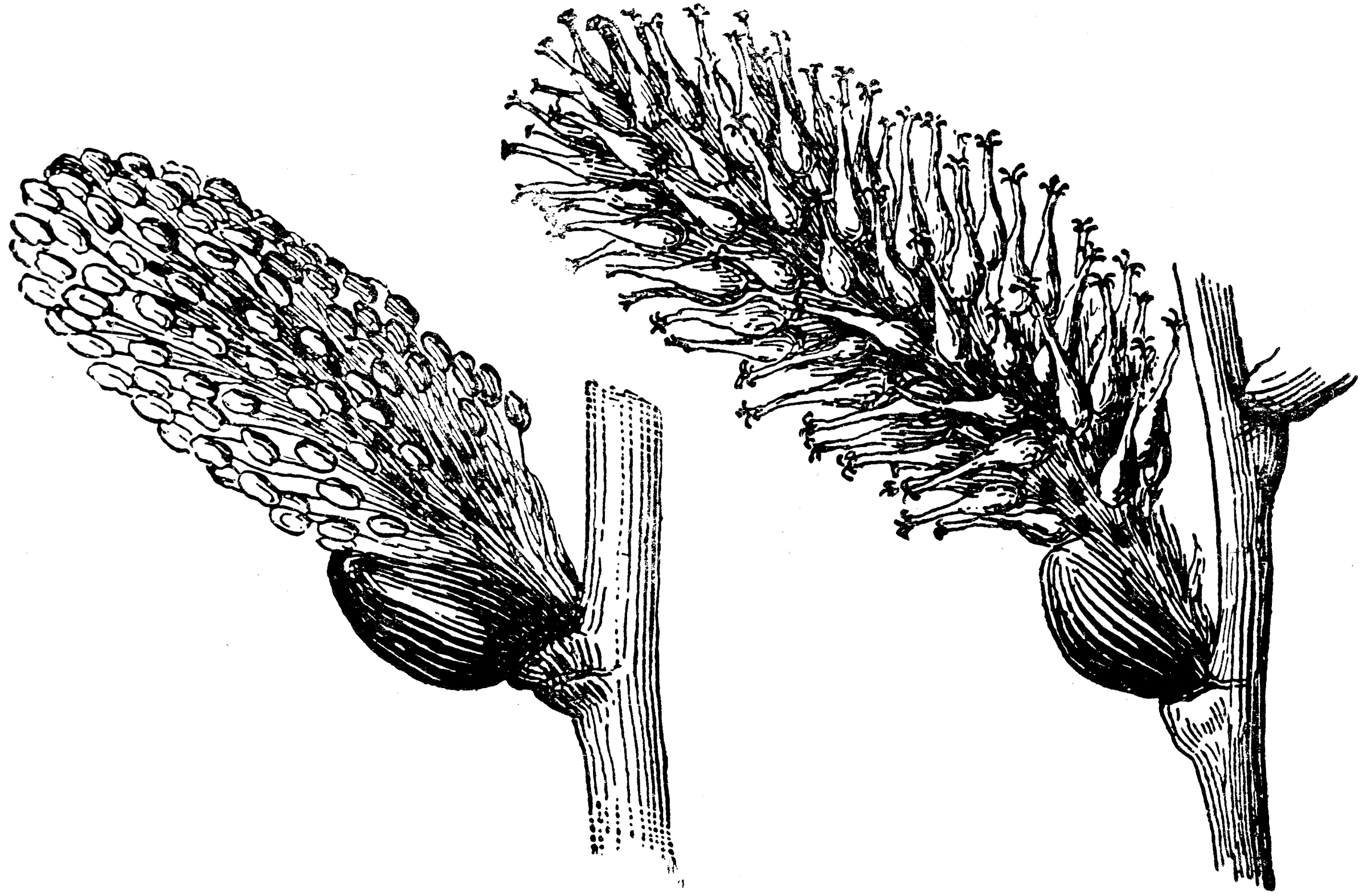The eastern gray squirrel (Sciurus carolinensis) is a successful mammalian species native to eastern north America but has been introduced to England and certain parts of the Europe. Early spring is the hardest time for these squirrels. It is especially burdensome for females who give birth to a litter between February and March. The young are weaned for about seven weeks. The videos were recorded on 8 April 2012 in Athens, GA which probably corresponded towards the most demanding last few weeks of weaning when babies get larger and extract more resources from their mother. Because most of the buried nut stash is depleted over the winter and with extra mouths to feed females turn to other food sources. Alternative foods may not be nutritionally rich.
On the flip side of this plant-animal interaction is the pecan tree (Carya illinoinensis) who relies on wind-pollination for fertilization of its flowers. Wind pollination is a very wasteful means of reproduction. It requires huge quantities of pollen to ensure a select few will reach their intended destination: female flower. Many plants have evolved flowers that attract insects to deliver pollen in the most efficient manner and guarantee reproduction.
A Mom Squirrel Feeding on the Catkins of Pecan Tree from Uzay Sezen on Vimeo.
To understand the impact of squirrel herbivory we need to take a look at the nature of pecan pollination. In plant world cross-pollination is important to prevent inbreeding and maintain genetic diversity. The pecan tree has evolved a system of flowering which prevents self-pollination. Pecan trees have male and female flowers (catkins) together on the same plant but these flowers are separate from each other. To prevent pollination of it’s own flowers, the tree matures male and female flowers at different times. Female flowers are not receptive on the same tree when male catkins are shedding pollen. Pecan trees have two types of maturation sequence. In one type the pollen is matured and released first, and several days to a week later the female flowers become receptive (protandrous). In the other type the opposite happens, the female flowers become receptive first, and then after the female flowers are no longer receptive, the pollen is released from the catkins (protogynous). In nature there are approximately equal numbers of protandrous and protogynous trees, ensuring pollen is available throughout the flowering season. In orchards when pecan trees are artificially self-pollinated using the similar hand technique that Mendel used in his peas the resulting nuts do not grow and mature as well cross-pollinated ones. Further, seedlings germinated from self-pollinated nuts have visibly reduced vigor and the majority of these seedlings die before flowering.
Plants don’t move but their genes do by pollen and seeds. By feeding on the catkins, our squirrel is reducing the reproductive success of the tree. Herbivores can have a big impact on both terrestial and aquatic communities. For example marine algae can be grazed very heavily by fish and sea urchins in areas where predators are in decline.
Below is a natural history drawing of catkins. On the left is male (staminate) and on the right is female (pistillate) flowers.



2 Comments
How do you stop the squirrels from chewing off the catkins? They ruined all last year and are half way thru them already this year! I don’t get any pecans any more!! What can be done??????